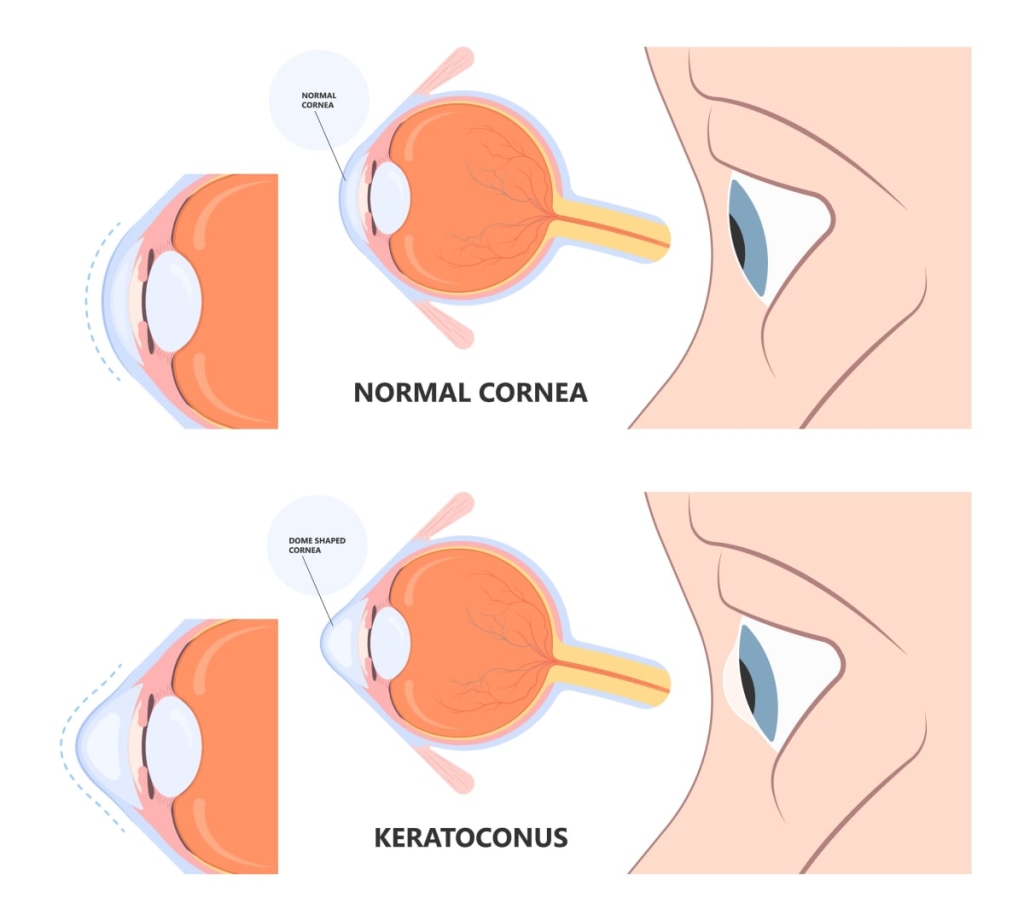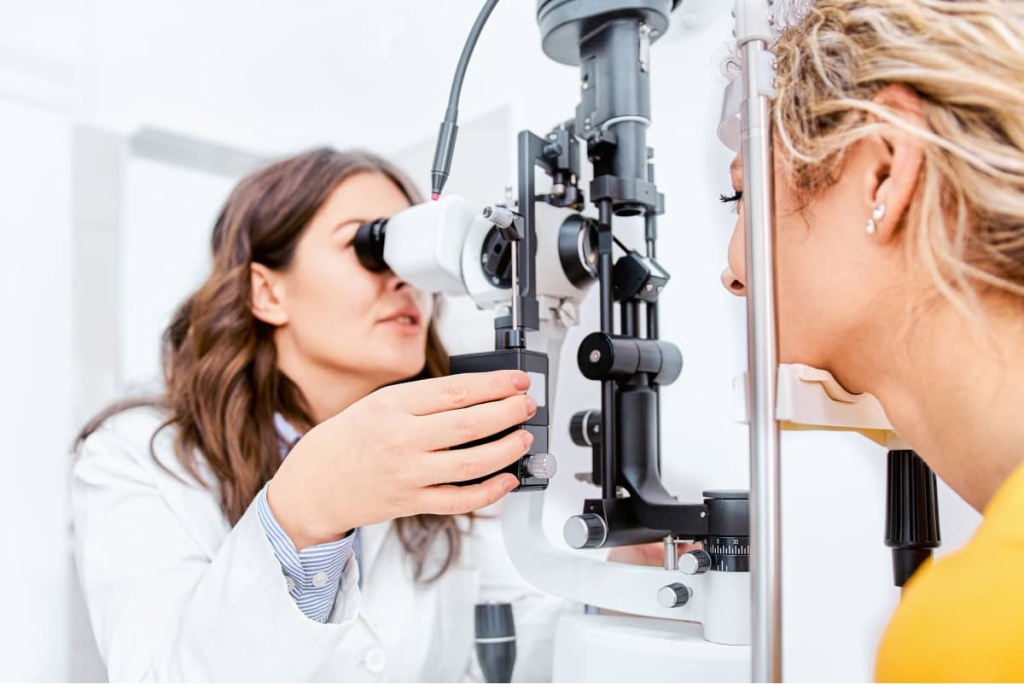Keratoconus – What you should Know
Keratoconus is a non-inflammatory eye condition. It occurs when the normally domed-shape window of the eye (the cornea) progressively thins and begins to bulge outwards into a cone-shape. Changing shape impairs the eye’s ability to focus which can lead to poor vision and sensitivity to light and glare.
While the condition typically affects both eyes, it’s possible to affect one eye more than the other.
Signs and symptoms of keratoconus
Are you wondering how to know if you have keratoconus? Unfortunately, in the early stages of the condition, many people are unaware they have it due to the lack of obvious symptoms. However, as the condition progresses, symptoms will become more noticeable. You may notice:
- blurry, cloudy, or distorted vision
- constantly needing to change eyeglass prescriptions
- sudden worsening of vision
- increased sensitivity to bright light and glare which can lead to issues with night-time driving.

How common is keratoconus?
You may be wondering: is keratoconus rare or is keratoconus hereditary? The condition affects approximately one in 2000 individuals, often developing around puberty or early adolescence. Males, African Americans, and Latinos are at greater risk of developing this condition. While it affects both men and women, those with a family history of keratoconus are more likely to develop it too.
Stages of Keratoconus
Keratoconus develops in 3 stages:
- During this stage, you’ll struggle to see far-away objects and may have to squint to see clearly. You may also experience symptoms of astigmatism, including eye strain, headaches, and blurry vision.
- In stage 2, you’ll experience increasingly poor vision, including ‘halos’ around lights, trouble seeing at night, eye irritation, and scarring of the cornea.
- In the final stage, your symptoms will become more severe and the bulging of your cornea may be more noticeable.
How can we help you?
While keratoconus does not cause blindness, if left unchecked, further changes in the cornea’s shape can impair the eye’s ability to focus and function properly. Our expert optometrists are here to help. We’re proud to have advanced specialist equipment to diagnose and treat your eyes. These include:
- slit-lamp exam
- corneal topography
- keratometry
- pachymetry
- specular microscopy
- eye refraction.

To monitor your condition and prevent it from progressing, we’re happy to recommend a range of safe and effective treatment methods. These include:
- scleral Lenses; special contact lenses covering one section of the cornea to sharpen vision
- rigid gas permeable (RGP) lenses; designed to allow your eyes to ‘breathe’ better while enhancing vision.
- keratoconus soft lenses; specially for keratoconus, these lenses are thicker than regular soft lenses to retain their shape.
- piggyback lenses; with this treatment, you’ll wear soft contact lenses on the eye and an RGP lens on top to improve vision.
- SynergEyes; these contacts feature a high oxygen permeable (SiHy) soft lens skirt in addition to an ultra-high oxygen central gas permeable lens.
Get in touch
To book your next eye appointment and determine which keratoconus treatment is best for you, please do not hesitate to give us a call at 972-661-2020 or Book an Appointment online.
